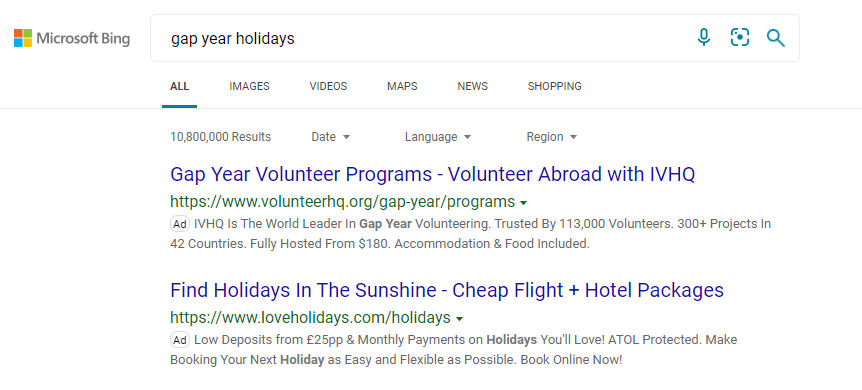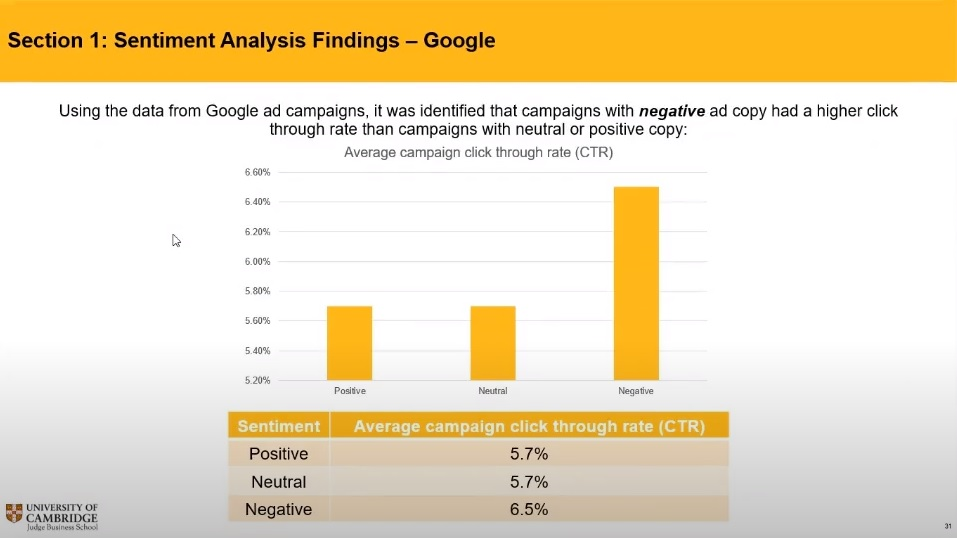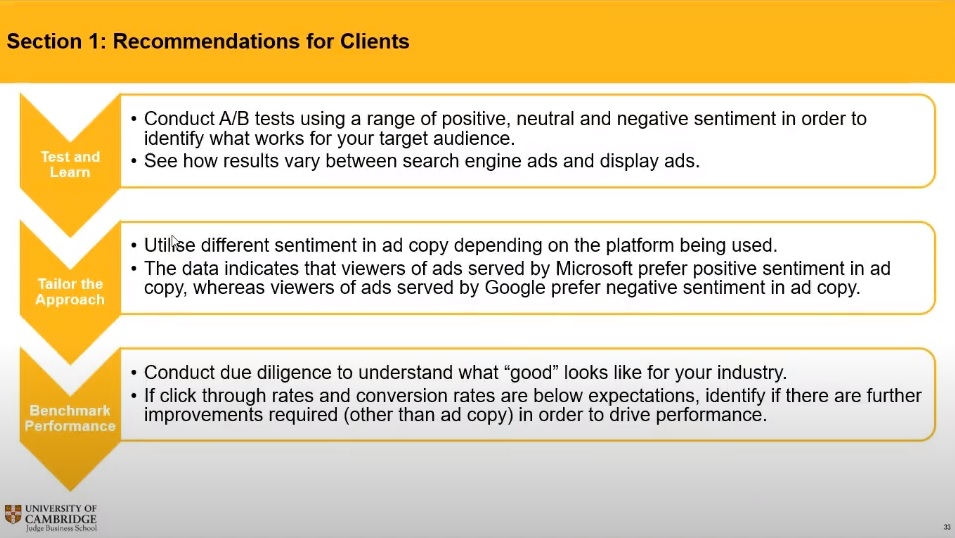As marketers, PPC managers, or business owners, we’re always looking to squeeze more efficiency from our marketing budgets. It’s a never-ending task.
No matter how optimised our campaigns are, there’s always room for improvement somewhere, and that’s why we always need to be humble enough to never rest on our laurels and always keep an eye out for improvements.
But there’s only so much time in the day and there’s only so much resource at our disposal.
Of course these days most marketers you speak to will use some kind of software such as an SEO platform like SEO PowerSuite, a visibility platform like SEMrush, or Adzooma’s free PPC management platform, and these platforms will, of course, save you oodles of time.
But that doesn’t mean the time you saved should be spent on yoga (I’m not slagging yoga off, it’s great, but it’s not going to improve your marketing results).
Instead, it gives us more hours in the day to focus on the bigger picture, on our strategy, and that’s where this article I’ve got for you today comes in.
Working in collaboration with the University of Cambridge, our in-house product and data scientist team alongside three Cambridge MBA programme students, took a deep dive into Adzooma’s treasure trove of data with the intention of using that data to make Adzooma better and to answer the question – What makes online marketing work?
This article is one part of a wider series, here are the rest:
- What Makes Online Marketing Work: The Cambridge University & Adzooma Findings
- A background look into how and why we ended up working with the University of Cambridge
- How To Select The Best Digital Marketing Channel For Your Business
- We drove into our reams of data to determine whether Microsoft, Google and/or Facebook Ads is the best marketing channel for you
- What Makes A Landing Page Convert: The Cambridge University & Adzooma Findings
- Using the data, the team took a close look at how to get those extra leads and customers from your landing page
*Disclaimer – All campaign data provided to study participants was selected at random and anonymised.
So why content?
The question on your mind right now is probably an extension of the one above, “Okay, so if you wanted to answer the question, ‘What makes online marketing work?’, why is this article about content?
Well, that’s just how crucial content is. Once the Cambridge Uni students were aboard, each member of the team was tasked with leveraging Adzooma’s data in a way that would help small to medium sized businesses to maximise their ad spend.
One of the things that jumped out at them? Yep, content.
This probably isn’t the biggest surprise for many of you. It’s something that marketing gurus and thought leaders bang on about all the time often using those three immortal words: ‘Content is King’.
I mean, ever since the invention of the printing press we’ve seen how powerful content can be, so this isn’t groundbreaking stuff.
However, it’s fair to say that not everyone treats it with the respect it deserves. Your content strategy is something that needs to be considered at a business level right alongside your sales strategy, accounting and customer personas.
And by content strategy, I don’t mean your content marketing strategy, I’m talking everything from your tone of voice, to your sentimentality, right through to your imagery.
Let’s start with an example. Say you’re an in-house PPC manager for a UK travel company who specialise in gap year holidays. When your company was created, your founder would have had a typical customer in mind:
- Affluent – able to afford an expensive airfare and sustain themselves for a year
- Adventurous – looking to travel to a region of the world dissimilar to their own for an extended period
- Young – the type of person who doesn’t mind the hostel life, constant travelling, and has no family commitments
- Time to spare – students who’ve just finished university/college or millennials on a career break
Of course, there will be so many more considerations, and not every person going on a gap year will fit this mould. Typically, however, they would, and from this persona is where your tone of voice and sentimentality is created.
So how do you speak to them in your PPC ads? Are you upbeat, are you trying to evoke some excitement from their soul? Or do you want to go the other way and play it cool by impressing them with sophisticated diction?
These types of decisions are crucial, and aligning these decisions across your whole marketing strategy is a key to success.
That’s why I say your content strategy needs to be a business level decision. And if isn’t, and you are that PPC manager as highlighted above, put the word in to your boss, maybe ask them to get a marketing strategist on board. Because it’s fine writing evocative ads, but if this doesn’t align with the type of customer who’ll be seeing your ad or interested in your product or services, that disconnect will show up in your results.


How to get it right & the research to back it up
Getting your brand’s sentimentality right is tough and requires work. You need to be agile, you need to always be abreast of the latest trends, you need to be able understand your audience, you need to understand your niche, and your standing in that niche too.
If you’re a big enough brand, you should be social listening, monitoring social media channels for mentions of your brand and analysing the way people talk about you. That’s a crucial way of understanding your audience. Some great tools I’d recommend:
- Awario – The comprehensive way to monitor your brand’s mentions online. Simple as that. Prices start at $29 per month
- Agorapulse – Near perfect tool for managing your brand’s mentions across social media, and searching for keywords on Twitter. Prices start at $79 per month
- Mention – Really basic, but easy way to monitor your brand’s mentions across the internet, though do be careful as it doesn’t spot everything. Starts at $25 per month
- TweetDeck – A free platform which is basically how I imagine the people at Twitter wish they’d designed Twitter. Super easy to use
If you don’t have that following yet, monitor your competitors, industry trends, certain hashtags and keywords related to your business. Sometimes this might have a wider scope than for just your business too.
Back in March at the start of the pandemic, The Edelman Trust found in a report that customers wanted brands to stop marketing that was “humorous or too lighthearted in tone.” I’m sure you wouldn’t have done it, but imagine if you’d carried on running your travel ads not even taking into consideration the pandemic. Wouldn’t have worked would it?
You may think this out of your scope as a PPC manager, but it really isn’t. The key to stepping up from a good PPC manager to a great PPC manager is becoming a more well-rounded marketer.
But it also gets deeper than that, because you also need to understand the network you’re advertising on too. And that’s where our research comes in.
Studying 3,500 phrases across an even split of Microsoft and Google accounts connected to our platform, we were able to deduce some fascinating data.
First, I’ll start with a bit of a boast, but only because it provides you with little bit of context for the stats to follow.
From the analysis we found for both Google Ads and Microsoft Ads the click through rate for the accounts connected to the Adzooma platform was around 6% and 3.7% respectively, which if you’re up on your industry averages, far exceeds the 1.91% and 2.83% you’re expected to see.
This could obviously be for a couple of reasons: the accounts connected to our platform are of a high quality or our platform drives our users’ CTR up (which is probably the case considering it’s one of the many benefits you get from our Opportunities feature).
But this wasn’t the intention behind our research. What we wanted to do was take a real look into the sentimentality of the ads – whether positive or negative sentiment in the ad copy had an affect on the click through rate.
Going back to the travel example, what kind of ad would you opt for? Negative sentiment like, “Get out of dreary old Nottingham today!” Positive sentiment like, “The golden shores of Brazil await!” Or neutral sentiment like, “Book your holiday now!”
Being off brand will still bring customers in, sure, and the example ads will work in their own way, but writing ads specifically to your brand’s guidelines and the advertising channel you’re using is the key to success.
So, knowing the importance of this, when drilling down into the data, we saw quite the discrepancy. For Google Ads, those ads written with a negative sentiment saw a click through rate of 6.5% compared to 5.7% for neutral and positive.
With Microsoft Ads, that completely switched with positive sentiment seeing a 4.2% CTR, neutral 3.6% and negative 3.3%.


The reasoning? Of course it’s hard to be sure, but it’s important to acknowledge that these aren’t like for like comparisons. Indeed, when you compare any sets of data, you need to appreciate the scope for discrepancies – it’s hard to truly create a full proof test.
Yet whilst acknowledging those potential discrepancies, it’s also wise to look at the demographics of both the Google and Microsoft audiences.
We all know Google to be a beast, the first choice search engine of the majority of internet users, but Microsoft still has over 60 million search users in itself, and these users tend to be a little bit older (45 compared to Google’s 38), more affluent (1 in 3 Microsoft searchers have a household income of $100k, with 35% spending more on online shopping than a Google user), and more educated too (50% have a college degree).
These stats may seem abstract with relation to the sentimentality analysis, but if you cross reference them, we find some correlation.
For example, though people say money doesn’t buy happiness, a Harvard Business School Study found out that those with more money were roughly 0.25 points happier on a 10-point scale. A study by the Journal of Clinical Psychiatry discovered that, “Despite the physical ravages of age, older people are actually happier than younger adults.” While work from Blanchflower in 2008 shows that life satisfaction is higher for the more educated.
Does that mean then that Microsoft users are more likely to click positively worded ads because their userbase are likely to be happier than those who use Google? I think the answer is nuanced.
Nuance in research
Really, that’s how we should evaluate every piece of research we read, with nuance. Stats and datasets are hugely important, but you have to add your own context to them, especially in marketing.
The stats we gleaned from our research are really interesting, but taken in isolation, it’s not going to change your business. Using our research alongside your own research, your own content strategy, and your own brand identity, then that might. These were the recommendations made by the University of Cambridge students.

So keep digging into your audience, keep trying to find out who you truly are as a business. Our free PPC platform will help you immensely by easily telling you about the ads that aren’t performing and why, plus there are one-click optimisations for so many of the Opportunities too, which really allows you to focus on the strategy side.
But at the end of the day, no machine will ever be able to write ads or come up with a better marketing strategy than you could (not even GP-2). That’s why our platform is designed to take the manual side of the business away from you, so you can spend time on the work unique to you.
So much of the research and the questions that you ask yourself, your co-workers, your customers, or your employees may be deep, but that’s what you want, philosophical answers.
As the great business academic Gary Hamel said, discovery is the journey, insight is the destination.




